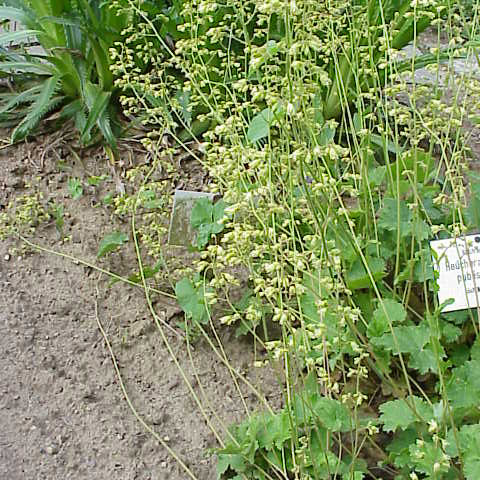Herbs acaulescent; caudex branched. Flowering stems often leafy, 30-95 cm, short stipitate-glandular. Leaves: petiole glabrous or short stipitate-glandular; blade broadly ovate to cordate, shallowly 5-lobed, 3-9 cm, base cordate to nearly truncate, lobes rounded to widely ovate, margins dentate, apex acute or obtuse, surfaces glabrous or sparsely short stipitate-glandular, at least on veins abaxially. Inflorescences diffuse. Flowers: hypanthium moderately bilaterally symmetric, free 2-6.2 mm, green, campanulate, abruptly inflated distal to adnation to ovary, 5.5-13.2 mm, very short stipitate-glandular; sepals spreading, green-tipped, equal, 2-4.2 mm, apex rounded (sinuses narrower than petals); petals inflexed, pink or purple, broadly spatulate, unlobed, 2.4-4.4 mm, margins fimbriate; stamens 1.1 mm included to 3.7 mm exserted; styles from 0.6 mm included to 3 mm exserted, 4-6 mm, to 0.1 mm diam. Capsules ovoid, 7-11 mm, not papillose. Seeds dark brown, ellipsoid, 0.6-1 mm. 2n = 14.
More
Plants 3–9 dm; scape with to 5 lf-like bracts; petioles and stems glabrous or glandular-puberulent; lvs round-cordate, conspicuously 5–7-lobed, the teeth broadly rounded to acute, mucronate; bracts of the infl somewhat scarious; fls oblique, 7–11 mm on the upper side, 2/3–3/4 as long on the lower, the free part of the hypanthium 2–6 mm; sep somewhat spreading, rounded, separated by narrow sinuses; pet white to pink or purple, 2.5–5 mm, somewhat inflexed, broadly spatulate, generally fimbriate-margined; stamens and style typically barely exserted, varying to barely included or evidently exserted; 2n=14. Upland woods in the Ridge and Valley geological province, from s. Pa. and w. Md. to Va. and W.Va. May, June.

